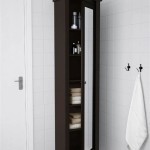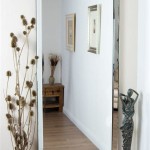How To Screen Mirror iPhone Xs to Macbook Pro
Screen mirroring allows users to display the content of an iPhone's screen on a larger display, such as a Macbook Pro. This functionality provides several advantages, including easier sharing of presentations, photos, and videos, as well as enhanced gameplay and movie-watching experiences. This article will explore the various methods available for screen mirroring an iPhone Xs to a Macbook Pro.
Using AirPlay with QuickTime Player
One of the most straightforward methods to mirror an iPhone Xs to a Macbook Pro leverages Apple's AirPlay technology in conjunction with QuickTime Player. This approach requires both devices to be connected to the same Wi-Fi network and offers a relatively simple setup process.
To initiate screen mirroring, users should first connect their iPhone Xs and Macbook Pro to the same Wi-Fi network. Then, open QuickTime Player on the Macbook Pro. From the menu bar, select "File," then "New Movie Recording." A recording window will appear. Next to the record button, click the dropdown arrow and under "Camera" select the iPhone Xs. The iPhone Xs screen will then be mirrored on the Macbook Pro.
This method provides a stable connection and high-quality mirroring, making it suitable for presentations, demonstrations, and sharing media content. Controlling the iPhone Xs remains intuitive, and actions performed on the device are reflected in real-time on the Macbook Pro display.
Using AirPlay with Reflector 3
While QuickTime Player offers a built-in solution, third-party applications like Reflector 3 provide additional features and flexibility for screen mirroring. Reflector 3 eliminates the need for wires and allows for wireless mirroring from multiple devices simultaneously.
To utilize Reflector 3, users must first download and install the application on their Macbook Pro. After launching the application, ensure both the iPhone Xs and Macbook Pro are connected to the identical Wi-Fi network. On the iPhone Xs, open the Control Center by swiping down from the top-right corner (or up from the bottom on older iPhones with a home button). Tap the "Screen Mirroring" icon and select the Macbook Pro running Reflector 3 from the list of available devices.
Reflector 3 offers additional features such as recording the mirrored screen, highlighting mouse movements, and adjusting the frame around the mirrored display. These features make it particularly useful for creating tutorials, recording gameplay, or providing remote assistance.
Using a Lightning Digital AV Adapter and HDMI Cable
For scenarios where a stable Wi-Fi connection is unavailable or unreliable, a wired connection provides a consistent and high-quality mirroring experience. This method involves using a Lightning Digital AV Adapter and an HDMI cable.
Users need to connect the Lightning Digital AV Adapter to the iPhone Xs's Lightning port. Then, connect one end of an HDMI cable to the adapter and the other end to an HDMI port on a monitor or projector. If the Macbook Pro does not have an HDMI port, an additional adapter may be required for connection. The Macbook Pro will then act as a secondary display.
While this wired approach offers a reliable connection, it restricts mobility due to the physical cable. However, it remains an excellent option for presentations in environments with limited or no Wi-Fi access.
Choosing the Right Method
The optimal method for screen mirroring an iPhone Xs to a Macbook Pro depends on the specific requirements and available resources. AirPlay with QuickTime Player offers a convenient built-in solution for quick and easy mirroring. Reflector 3 enhances this functionality with additional features for more professional applications. A wired connection using a Lightning Digital AV Adapter and HDMI cable provides the most stable connection, particularly beneficial in environments with unreliable Wi-Fi.
Users should consider factors such as network availability, desired features, and mobility requirements when selecting the most suitable screen mirroring method.
By understanding the nuances of each method, users can effectively leverage their iPhone Xs and Macbook Pro for enhanced productivity, entertainment, and collaboration.
Troubleshooting Connection Issues
Occasionally, users may encounter difficulties establishing a connection between their iPhone Xs and Macbook Pro. Several troubleshooting steps can help resolve these issues. Ensuring both devices are connected to the same Wi-Fi network and that the network is functioning correctly is crucial. Restarting both devices can also resolve temporary software glitches that may be hindering the connection. If using Reflector 3, verifying that the application is open and running on the Macbook Pro is essential. For wired connections, checking the integrity of the cables and adapters can help identify potential hardware problems.
Optimizing Mirroring Performance
To ensure a smooth and responsive mirroring experience, several optimization techniques can be employed. Closing unnecessary applications running on both devices can free up system resources and improve performance. Reducing the brightness on the iPhone Xs can also help conserve battery life during mirroring. Lastly, minimizing the distance between the iPhone Xs and the Macbook Pro, especially when using AirPlay, can strengthen the wireless signal and enhance mirroring quality.

How To Screen Mirror Ios 13 Iphone A Mac Or Windows Computer Wirelessly

How To Mirror Iphone Display Mac Ios 16 And Monterey Ventura 2024

How To Screen Mirror Iphone Macbook 2024

How To Mirror Iphone Display Macbook Ios 12 Macos Mojave

Airplay Iphone To Mac New Feature

Use Airplay To Stream Or Mirror The Screen Of Your Iphone Apple Support Sg

2024 Updated How To Mirror Iphone Mac With 5 Methods

2024 How To Mirror Iphone Display Mac Ios 14 And Big Sur

How To Mirror Iphone Mac Wirelessly Full Guide

How To Airplay From Iphone Or Ipad Mac Macworld








